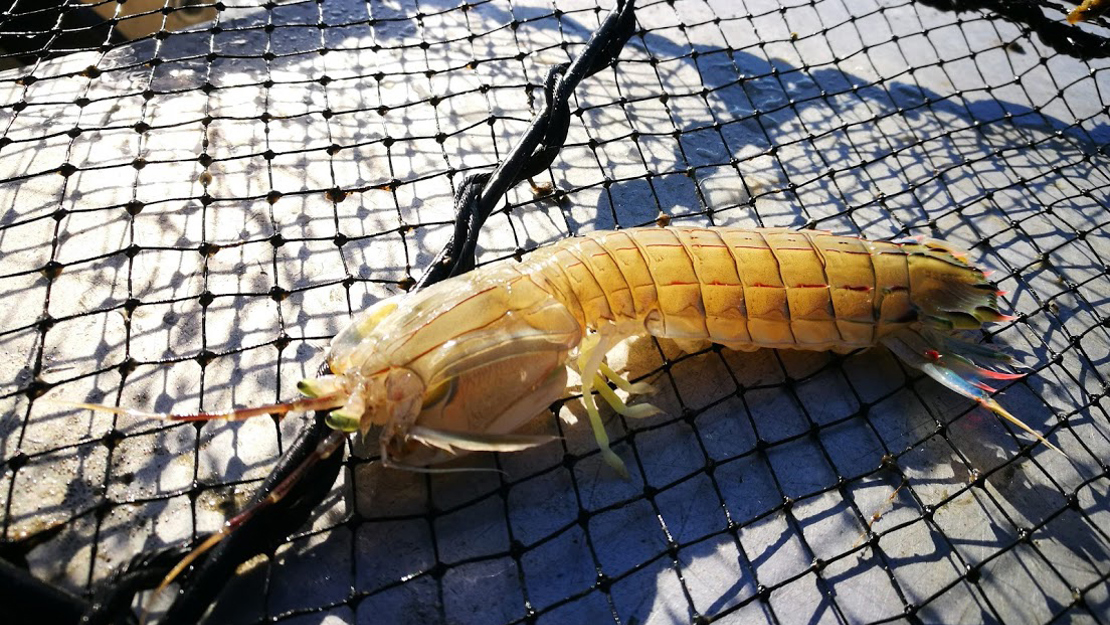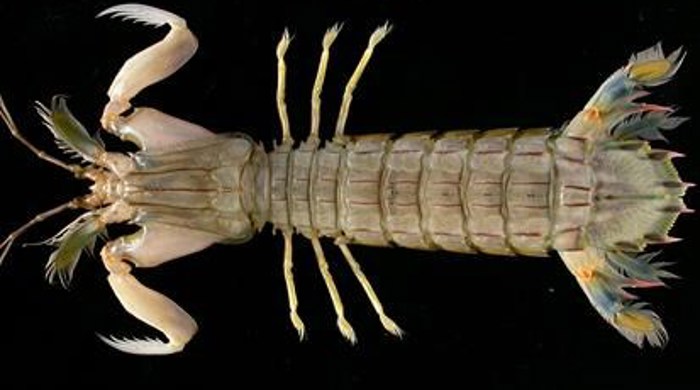Oratosquilla oratoria
Japanese mantis shrimp
Family: Squillidae
Origin: North-western Pacific, especially China and Japan

Regional Pest Management Plan (RPMP) status
- Whole region — Sustained control
General description
A large light grey mantis shrimp that can grow up to 185 millimetres long. It has two long spiny claws that it uses to capture food. The Japanese mantis shrimp has maroon ridges running down the mid-length of its body and a tail fan with a blue and yellow outer surface (grey and yellow in native species).
What you need to know
To help protect our environment:
- You must not breed, distribute, release or sell any Japanese mantis shrimp within the Auckland region. Dead individuals may be transported and eaten, provided that doing so does not distribute viable eggs.
- If you catch a Japanese mantis shrimp you must kill it immediately.
- If you’re in charge of any craft in the Auckland region you must ensure that the level of fouling on the hull and in niches of the craft does not exceed ‘light fouling’.
- If you’re in charge of any craft in the Auckland region you must ensure that it is free of all ballast water, bilge water, holding tank water or sea water held in any other container when entering any marine body from the land.
Habitats
Live in burrows in soft sediments, sand and mud in sheltered bays and estuaries.
Impact on environment
The Japanese mantis shrimp preys on a wide variety of important kaimoana species including native shrimps (kōurara / tarawera), crabs and juvenile fish and competes for resources with other crustaceans; thereby altering benthic communities.
Control
Management
Before moving your boat or other craft to new locations, make sure the hull, anchor chain and all other equipment on board is clean and free of marine pests or other fouling. Think about where you’re taking on or releasing ballast, bilge or holding tank water, or water in any other container such as chilly bins, to avoid spreading marine pests.
For more information on Japanese mantis shrimp and how to avoid spreading them, please visit Prevent pests from spreading or contact Auckland Council at pestfree@aucklandcouncil.govt.nz.




